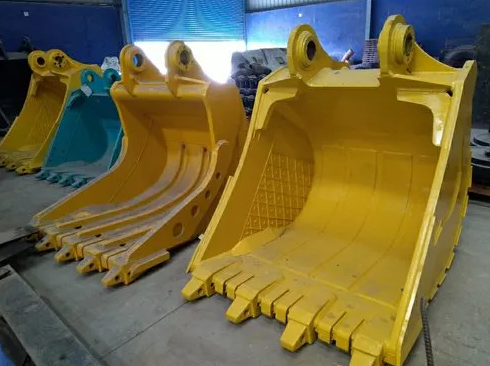Excavator buckets are pivotal tools in construction and mining operations, facilitating the digging, lifting, and transporting of materials with efficiency. Serving as the primary interface between the machine and the earth, they bear the brunt of challenging terrains and heavy materials. The production of excavator buckets is a precise science, merging material engineering with design expertise to ensure resilience, longevity, and optimal performance.

As urbanization and infrastructural development surge globally, the demand for high-quality excavator buckets has risen, emphasizing their essential role in shaping landscapes and powering industries. In this context, understanding their manufacturing intricacies becomes crucial for stakeholders across the construction sector.
Over the course of its history, EDCM has undergone a remarkable transformation in both design and production methods. In its early days, excavator buckets were predominantly handcrafted using rudimentary materials like wood and metal. However, as the demand for more effective and long-lasting buckets surged, advanced manufacturing techniques became imperative.
Crucial milestones in the evolution of EDCM’s production techniques include:
Today, EDCM stands as a leader in the production of excavator buckets that seamlessly combine exceptional durability and efficiency with a strong focus on environmental consciousness. This evolution underscores EDCM’s ability to adapt to industry demands and its unwavering dedication to remaining at the forefront of manufacturing techniques.
The core principles of production of excavator buckets revolve around material selection and design considerations, both of which are crucial for achieving durability and efficiency in excavator buckets.

The choice of materials is paramount in bucket manufacturing. High-strength steel alloys are commonly preferred for their excellent combination of strength, durability, and weight efficiency. These materials ensure the bucket can withstand the rigorous demands of excavation while remaining lightweight enough for efficient operation.
Wear-resistant materials, such as Hardox and AR (abrasion-resistant) steel, are often used for the bucket’s cutting edge and sides. These materials prolong the bucket’s lifespan by minimizing wear and tear during excavation, reducing maintenance costs, and increasing overall efficiency.
Material selection also considers the specific application and environment in which the bucket will be used. For example, buckets for digging in rocky terrain may require even tougher materials to endure abrasive conditions.
Bucket design plays a critical role in ensuring both durability and efficiency:
Innovations in EDCM (Excavator Bucket Manufacturing) have revolutionized excavator bucket production, enhancing performance and efficiency:
EDCM has adopted high-performance materials like high-strength steel alloys and wear-resistant coatings. These materials offer remarkable benefits, including increased durability, reduced weight, and enhanced wear resistance. They enable buckets to withstand demanding excavation tasks and extend their operational lifespan.
Modern manufacturing processes have harnessed cutting-edge technology, such as Computer-Aided Design (CAD) and Finite Element Analysis (FEA). CAD allows for precise bucket design and customization, optimizing efficiency and structural integrity. FEA simulations help engineers predict how buckets will perform under different loads, leading to improved designs.
Automation and robotics have streamlined EDCM’s production processes. Automated welding and cutting systems ensure consistent weld quality and precise component fabrication. Robotic arms can handle repetitive tasks, increasing efficiency and reducing human labor. These innovations lead to faster production, lower error rates, and cost savings.
EDCM has embraced digital monitoring and Internet of Things (IoT) integration for real-time performance tracking. Sensors and data analytics help monitor bucket usage, wear, and maintenance needs, enabling proactive maintenance and reducing downtime.
Innovations in EDCM also include eco-friendly practices. Manufacturers explore sustainable materials and production methods to reduce their environmental footprint, aligning with the growing demand for environmentally responsible construction equipment.
Rigorous quality control measures ensure that excavator buckets meet precise specifications, enhancing performance and longevity while reducing the need for repairs.
Implementing eco-friendly materials and processes minimizes environmental impact, aligning with sustainability goals and addressing the industry’s growing focus on responsible production.
Adhering to strict safety protocols safeguards workers and minimizes accidents, emphasizing the well-being of employees during manufacturing processes, assembly, and testing.
In conclusion, EDCM production of excavator buckets stands at the forefront of innovation and best practices in production. By incorporating advanced materials, cutting-edge technology, and sustainable approaches, we consistently deliver high-quality, efficient, and environmentally conscious excavator buckets. Upholding stringent quality control and safety standards further underscores their commitment to excellence. EDCM’s dedication to innovation and best practices ensures that its products continue to meet the evolving demands of the construction industry while contributing to a more sustainable and safer future.